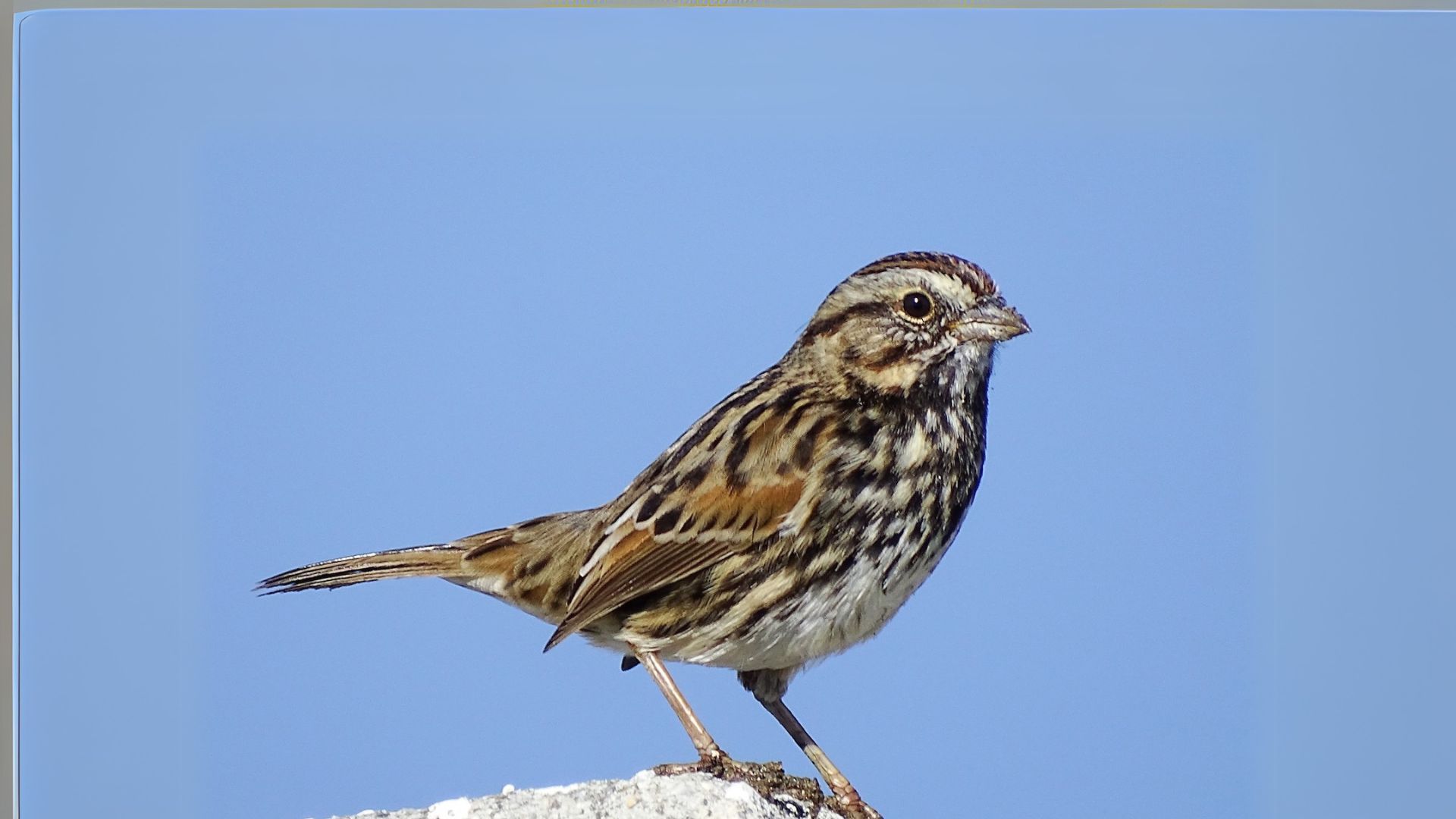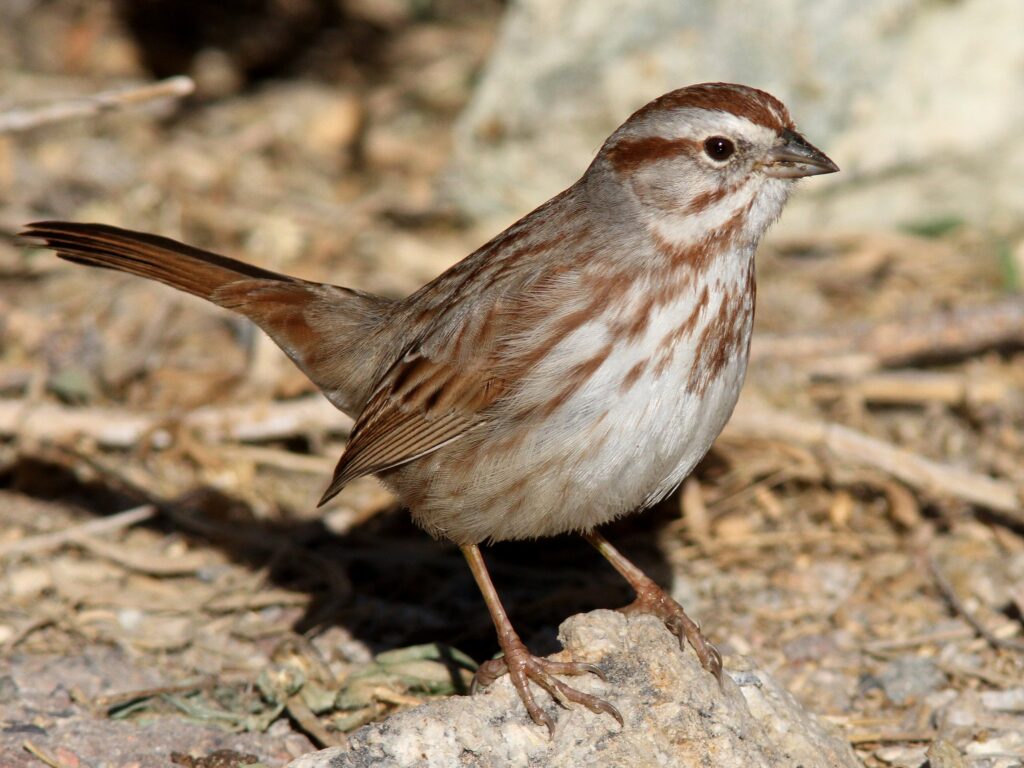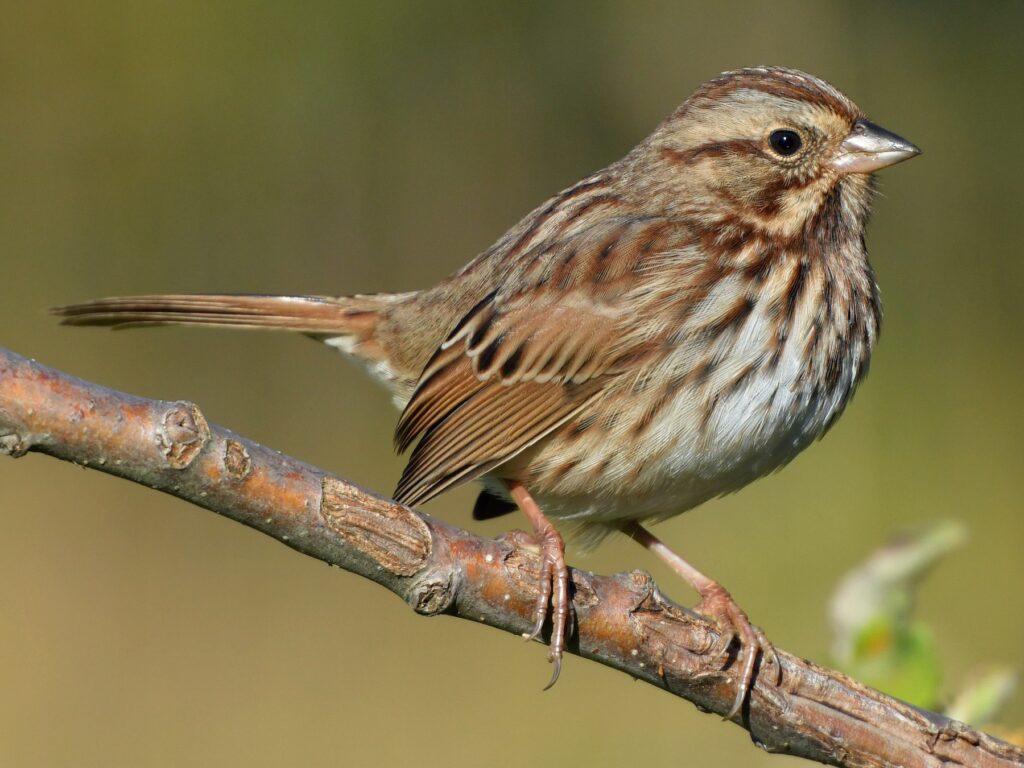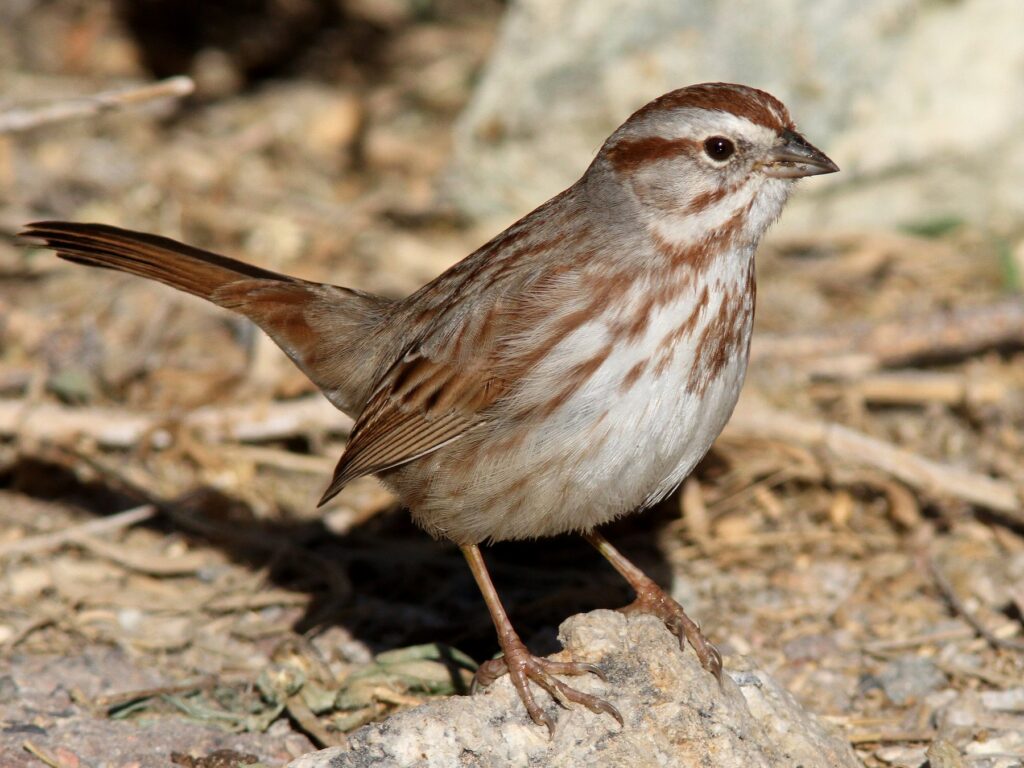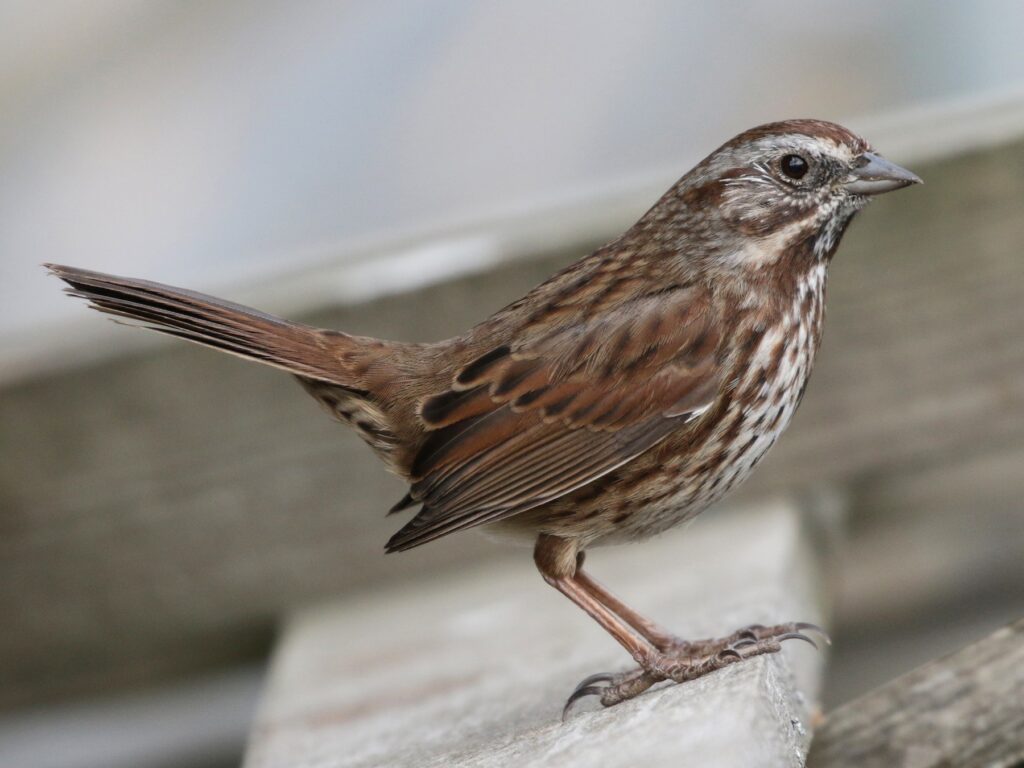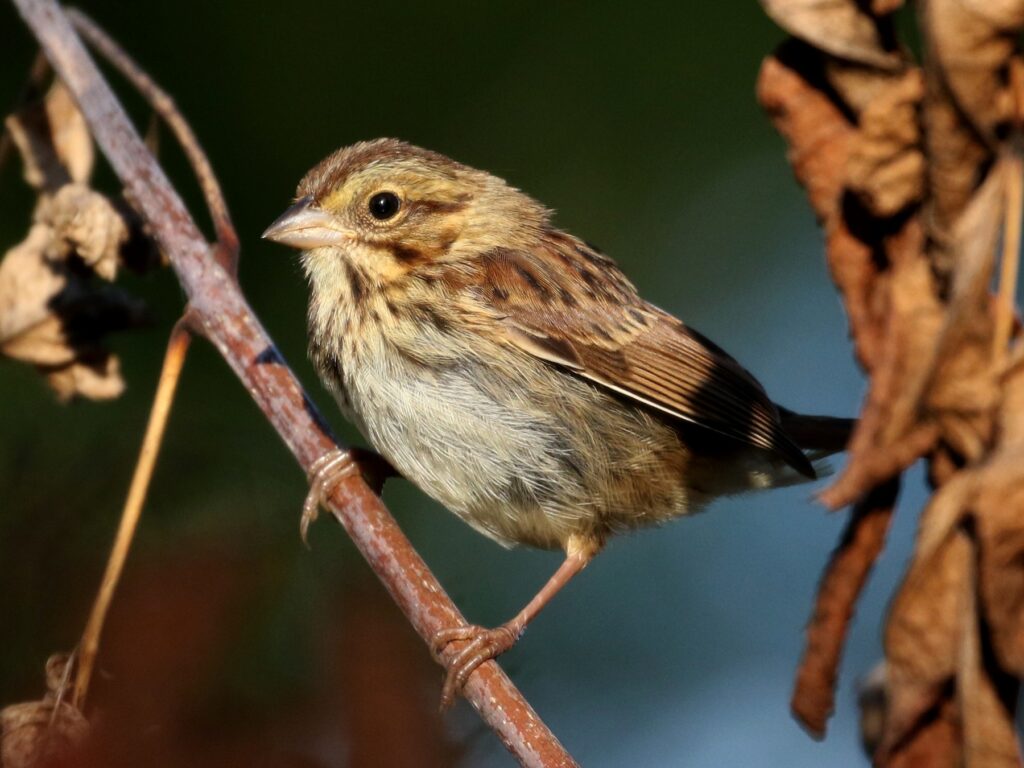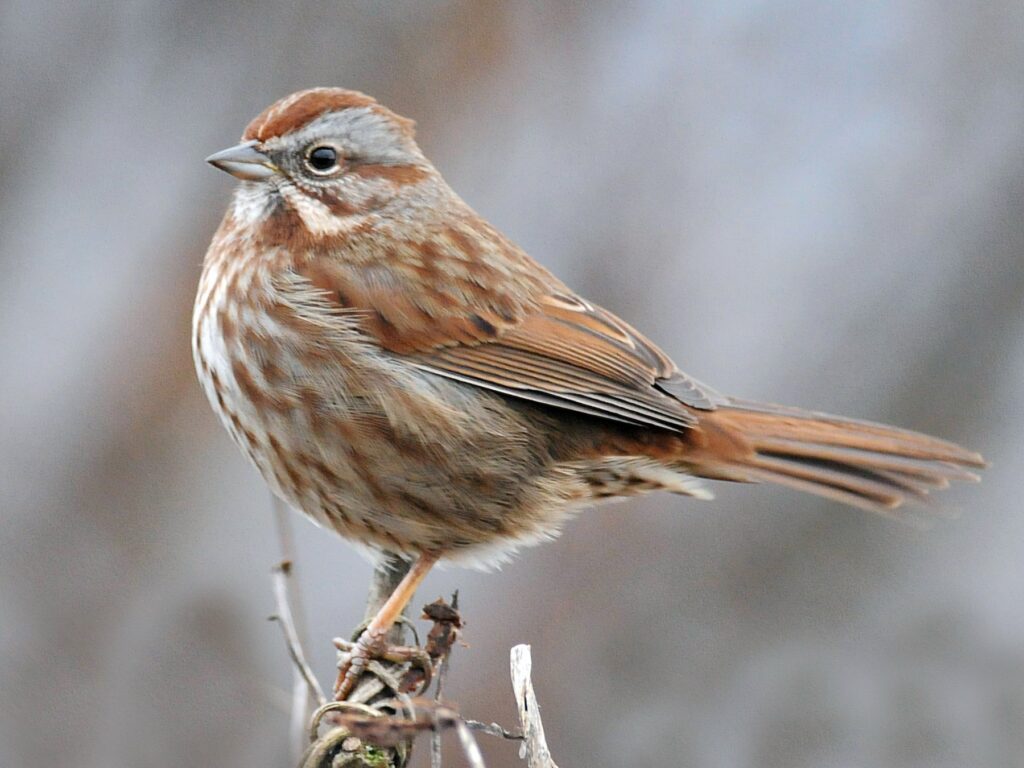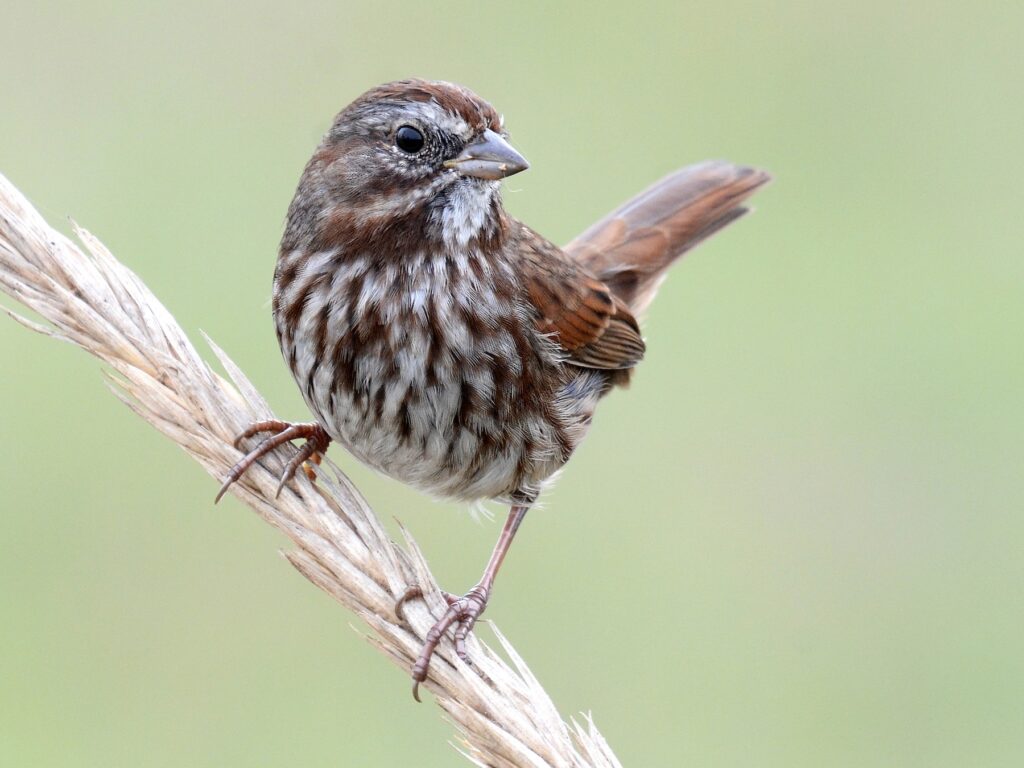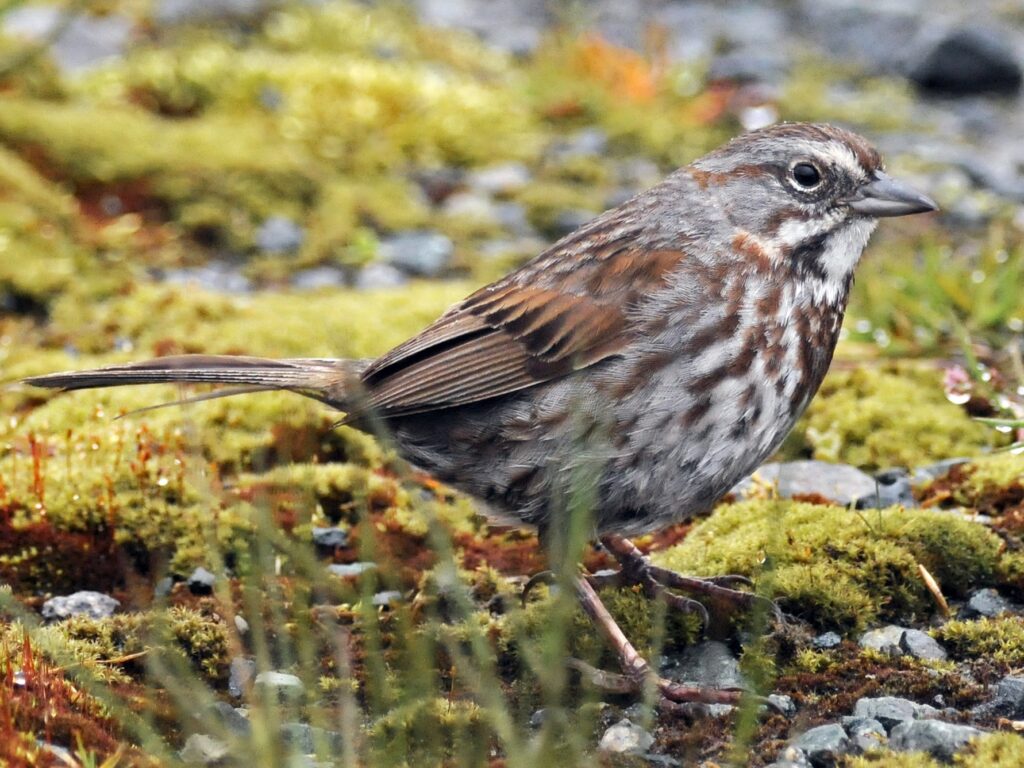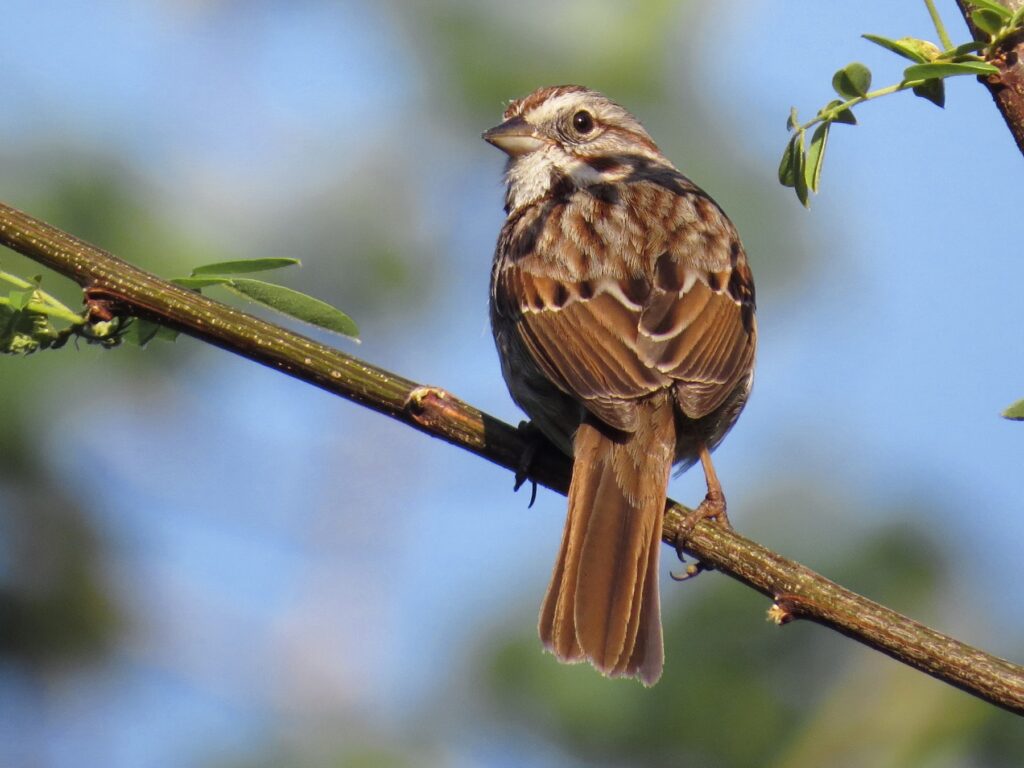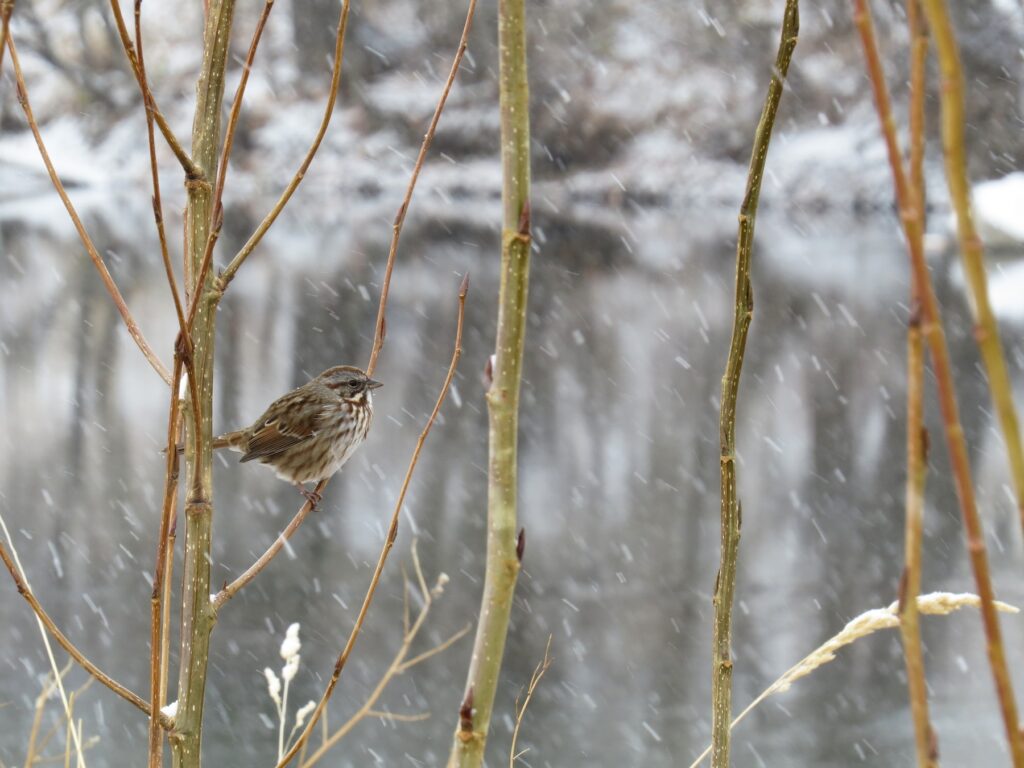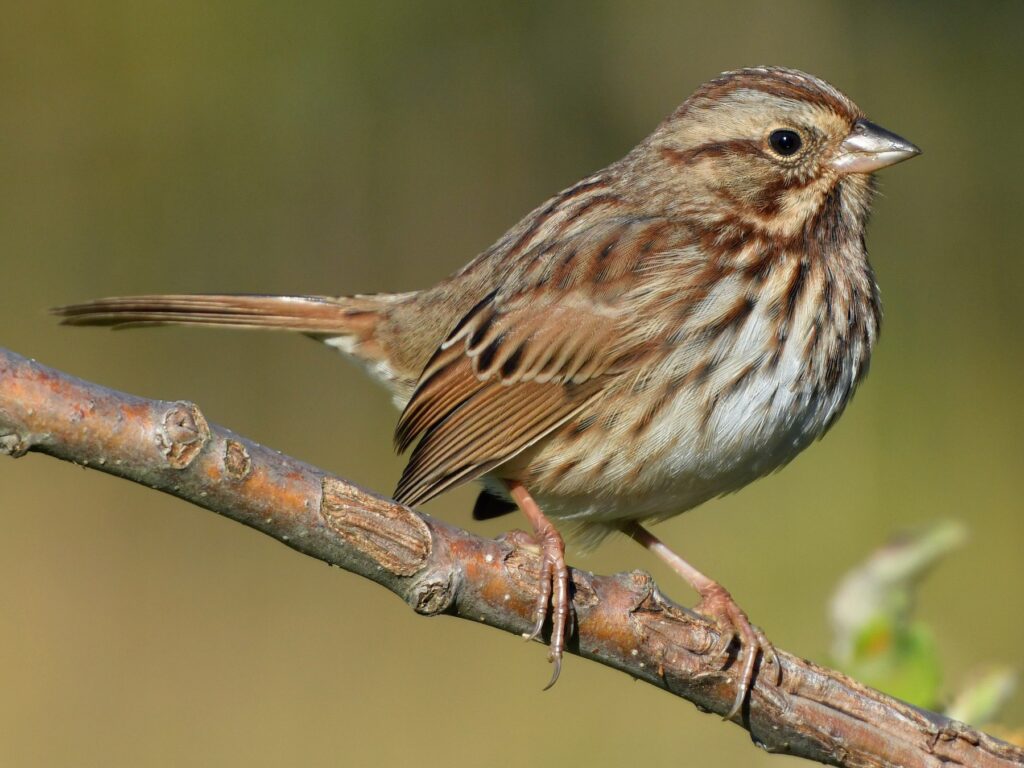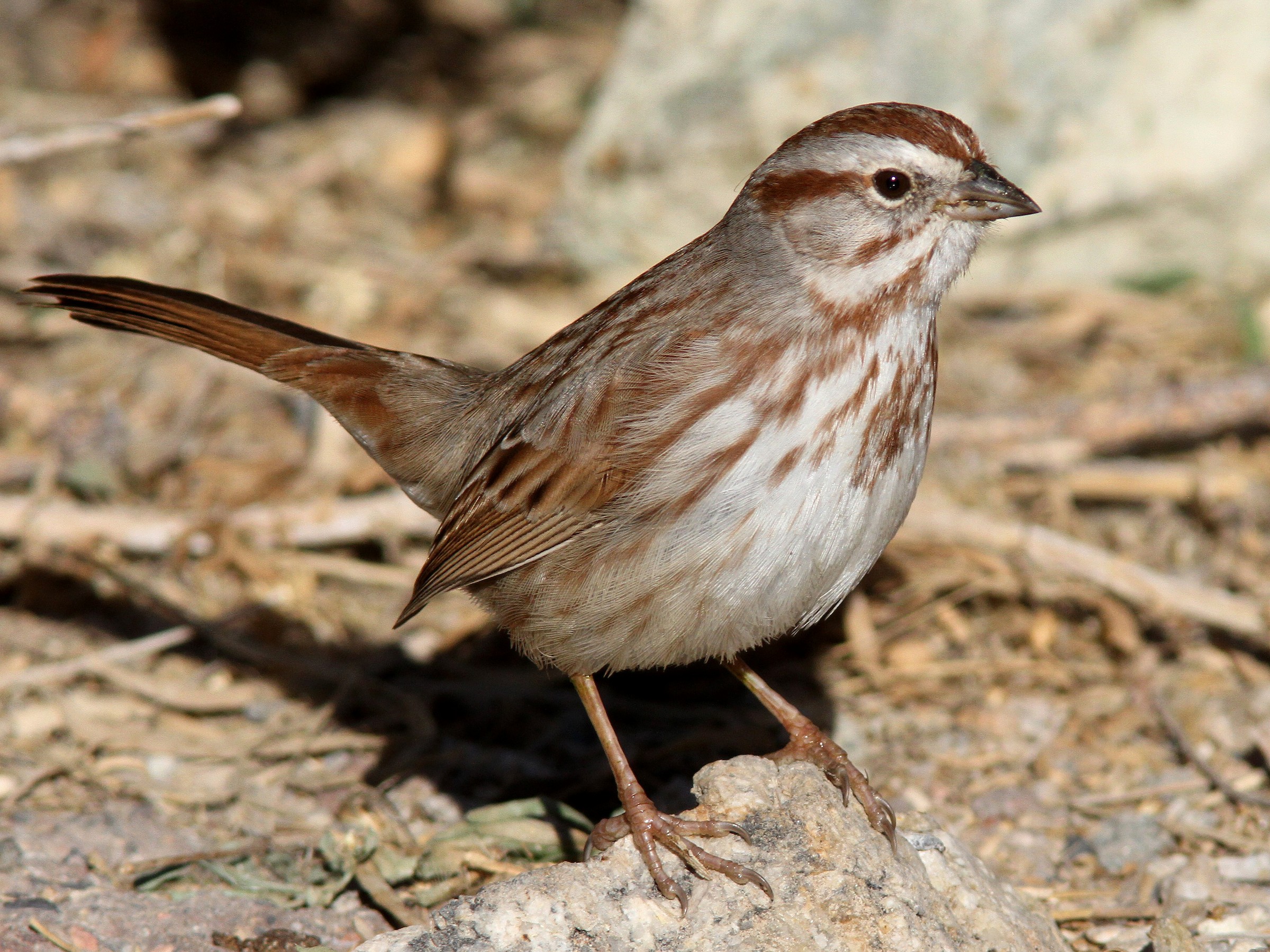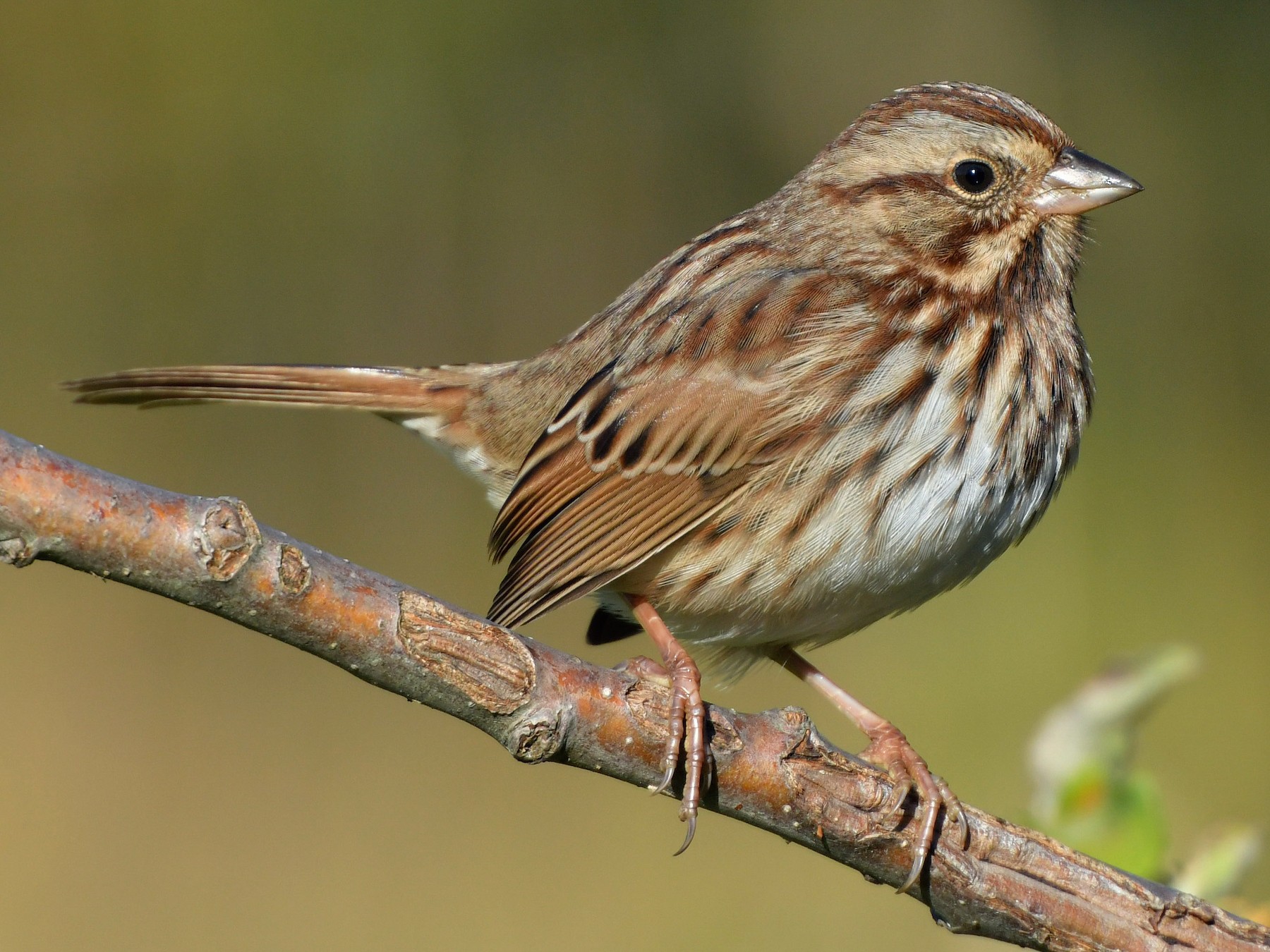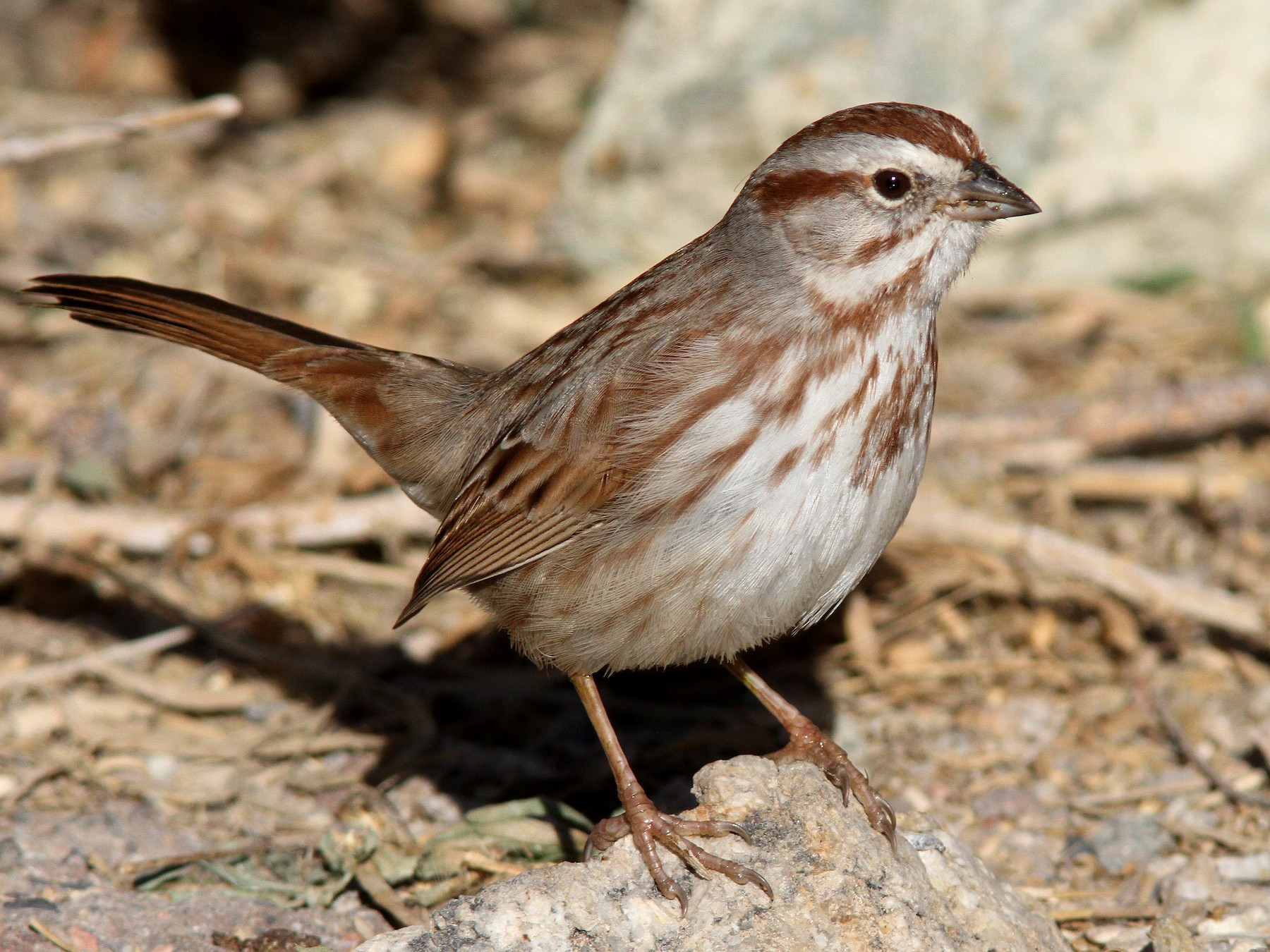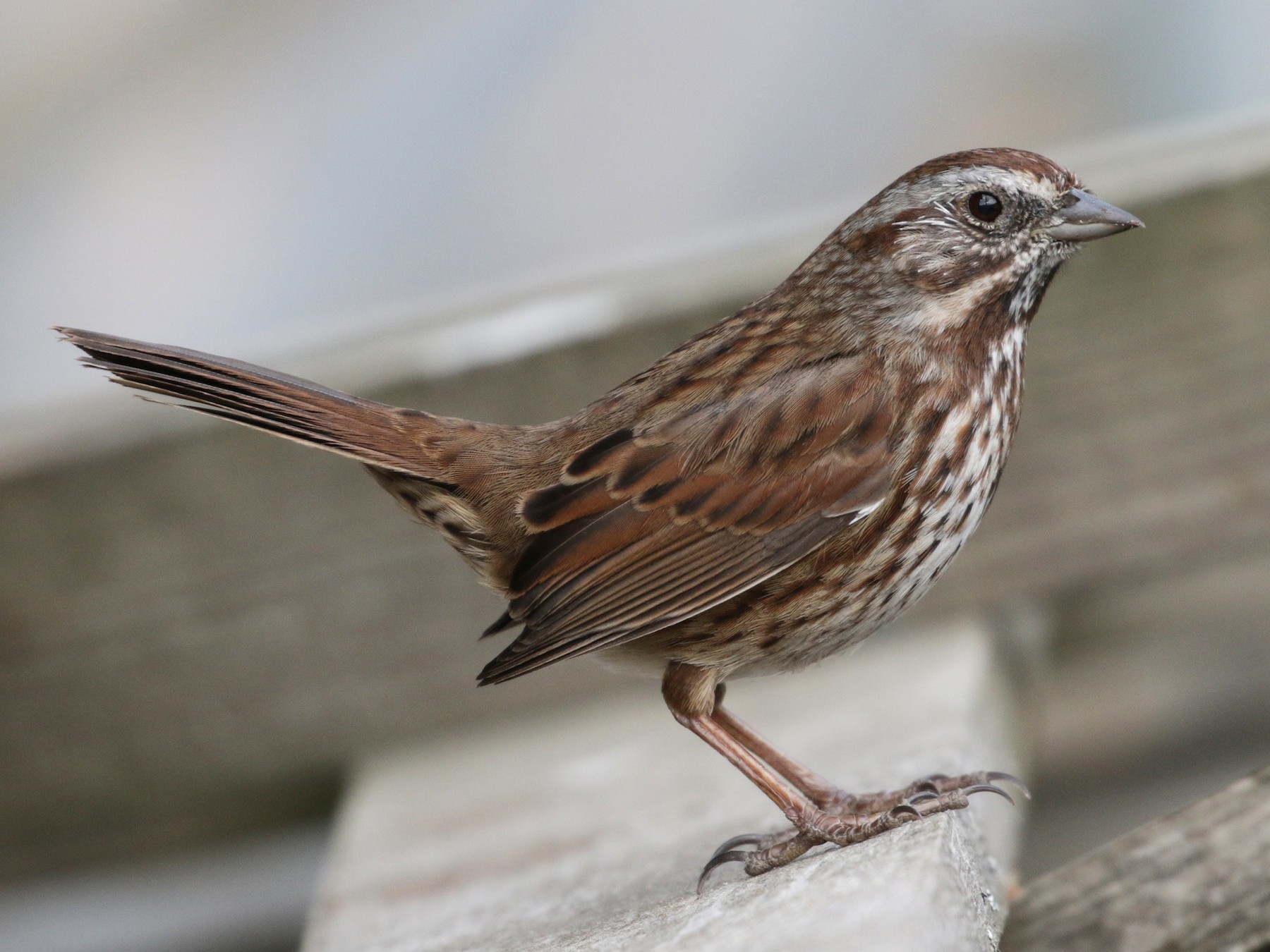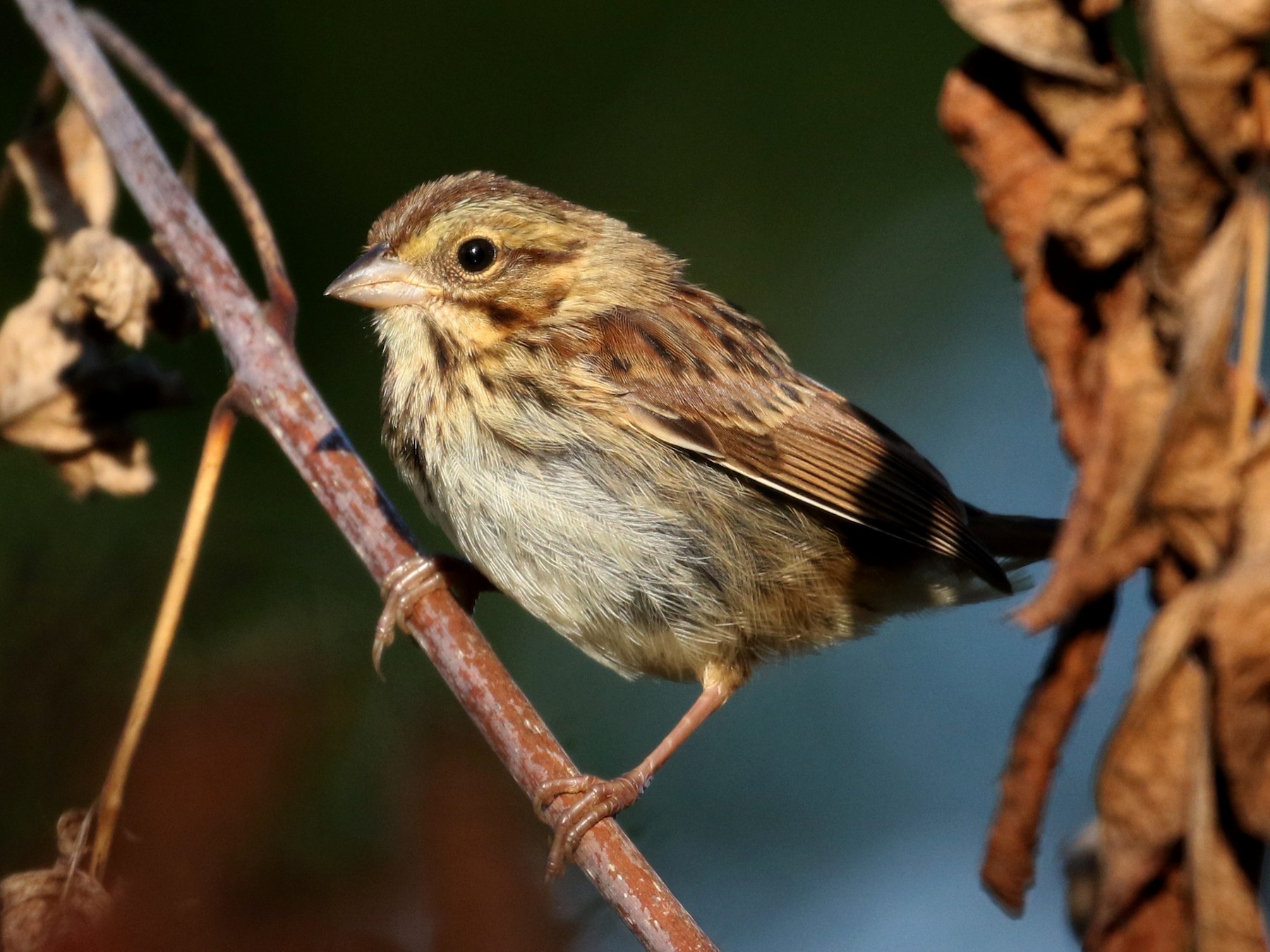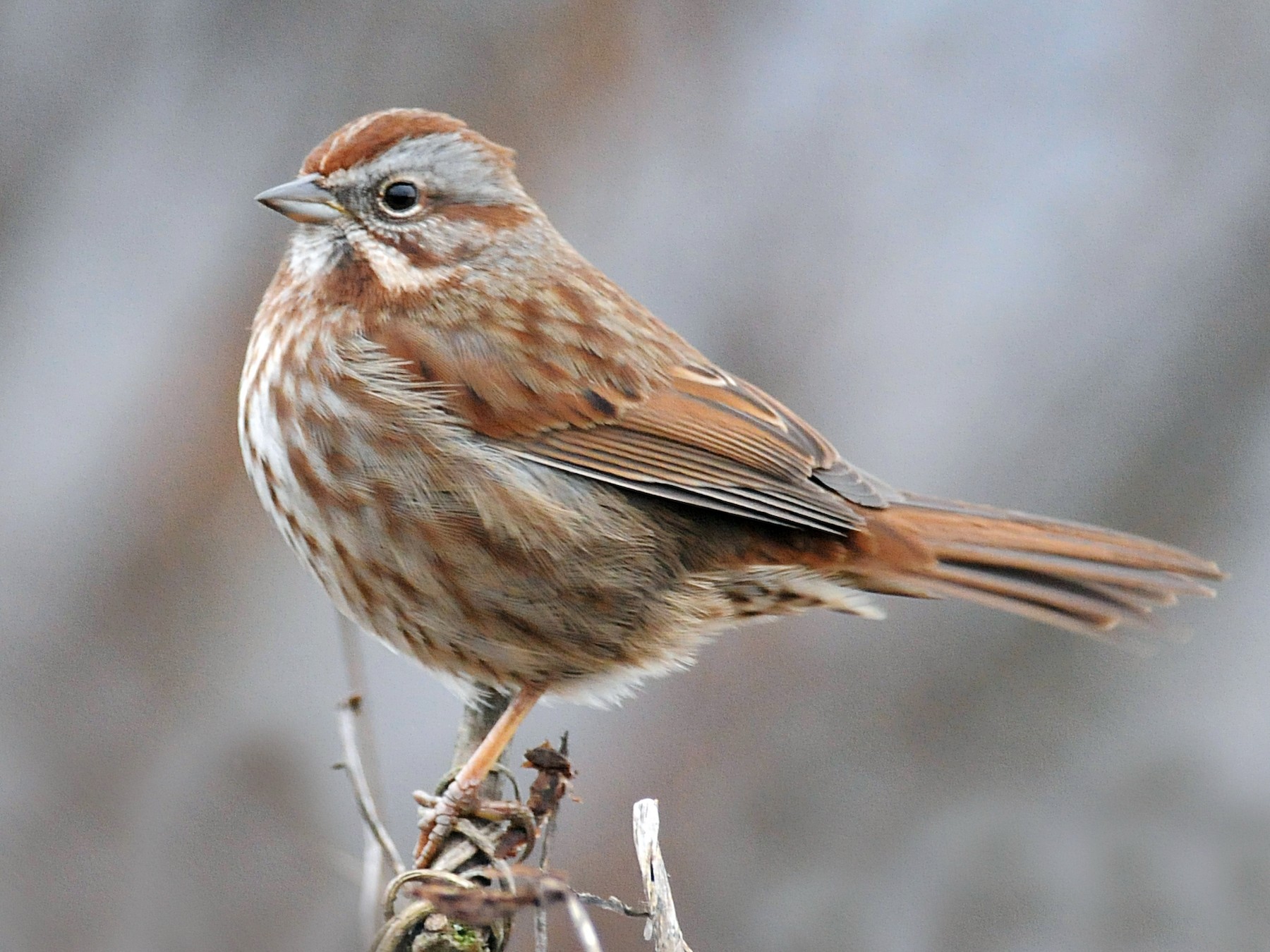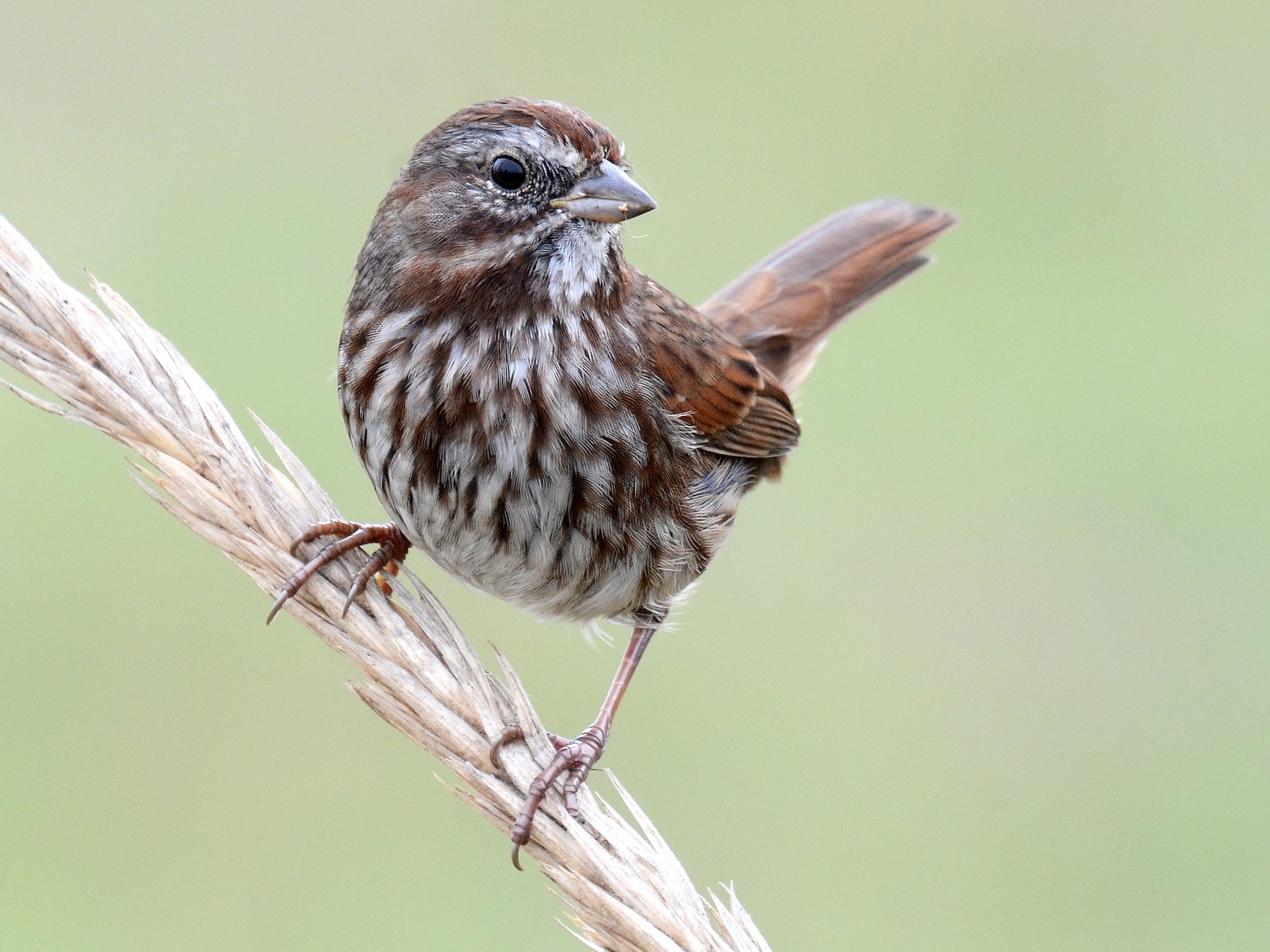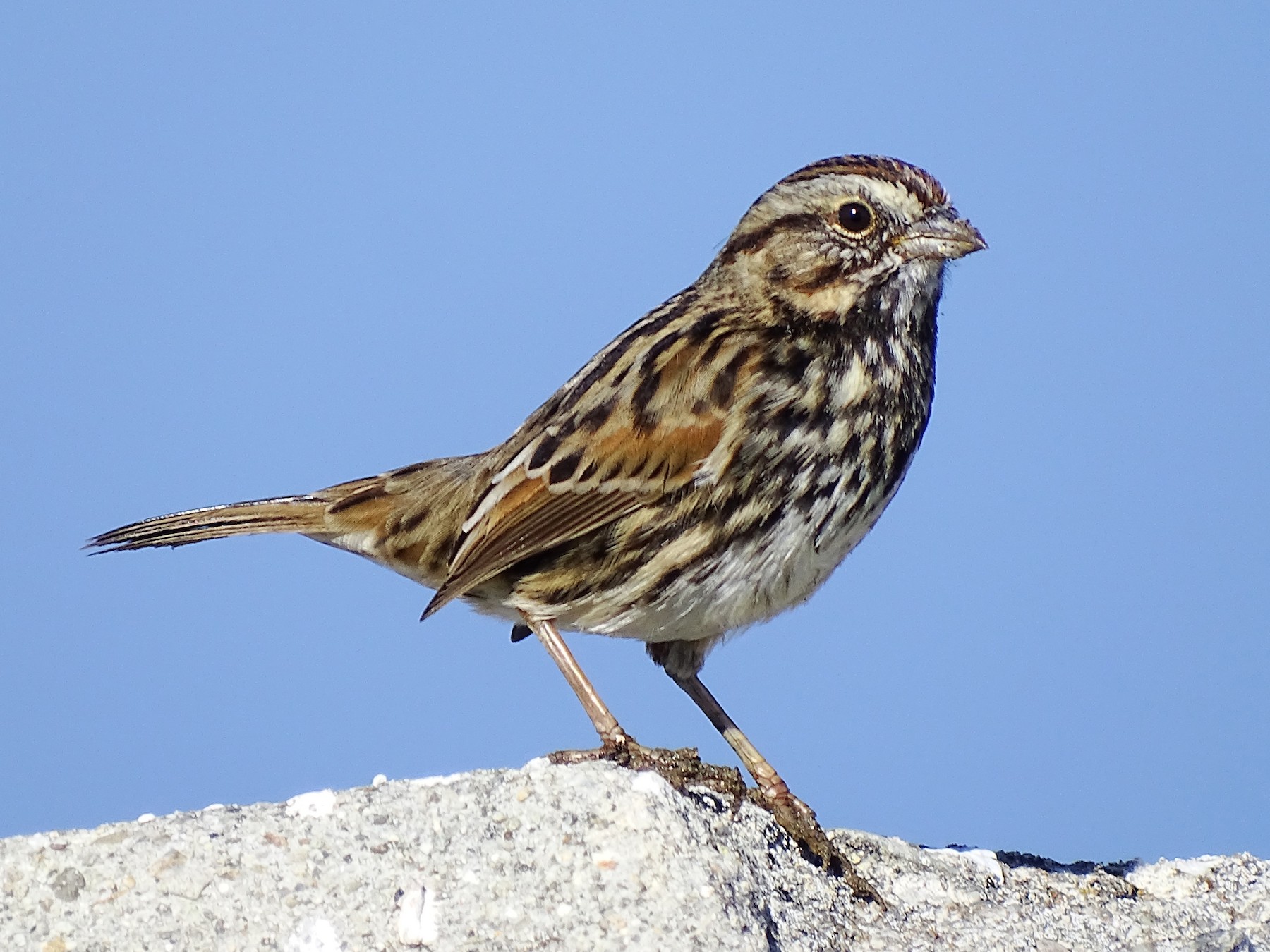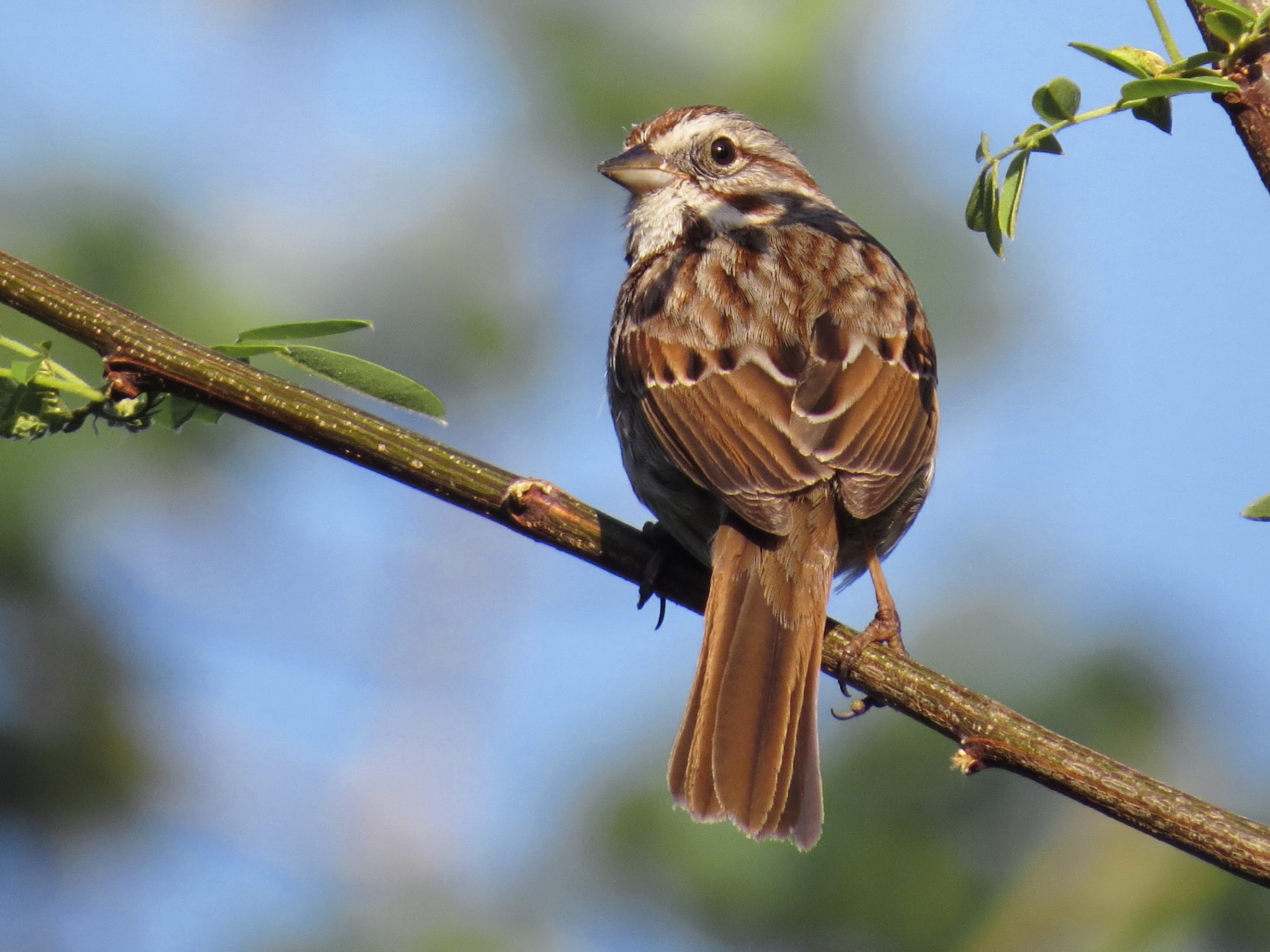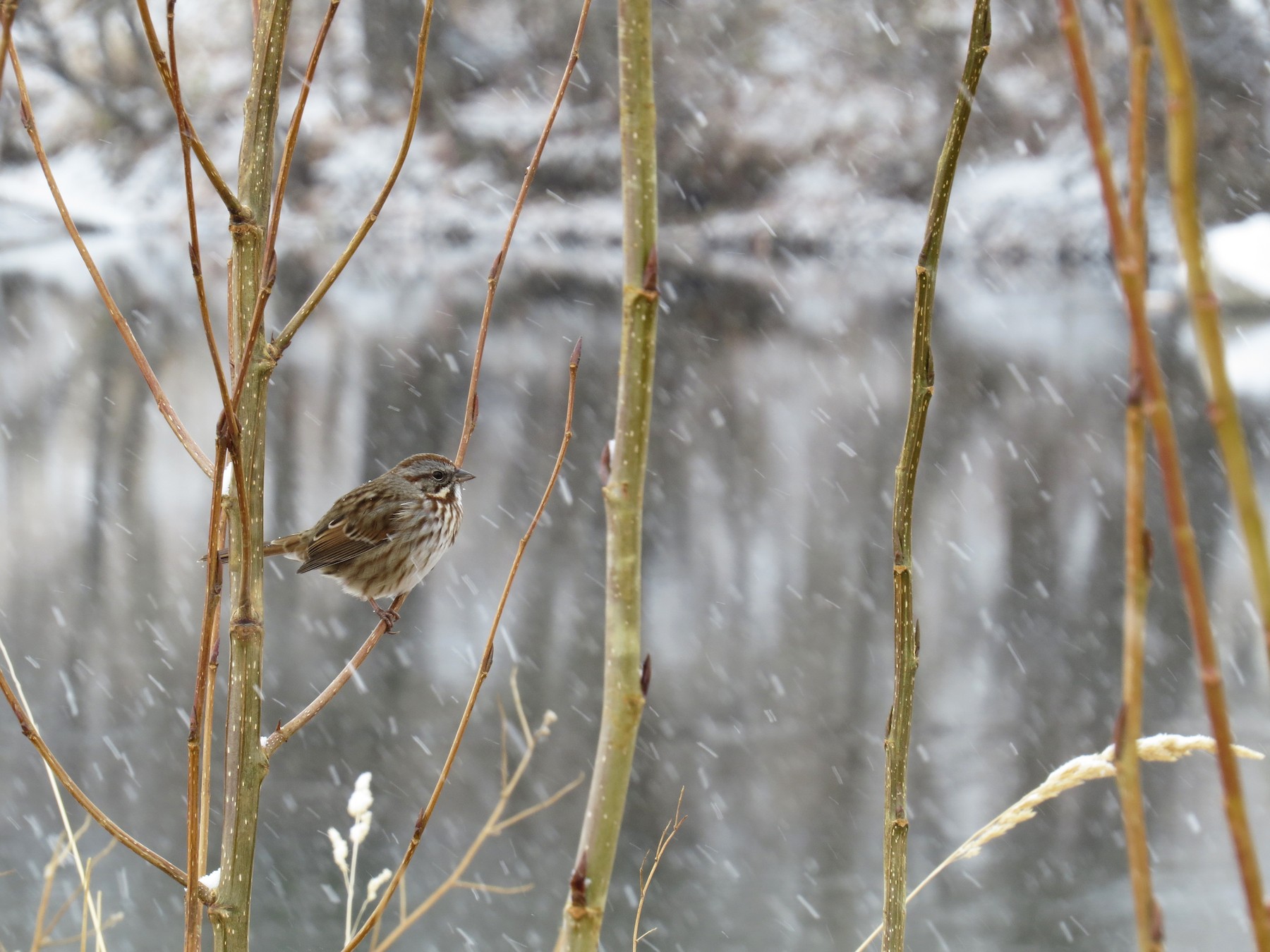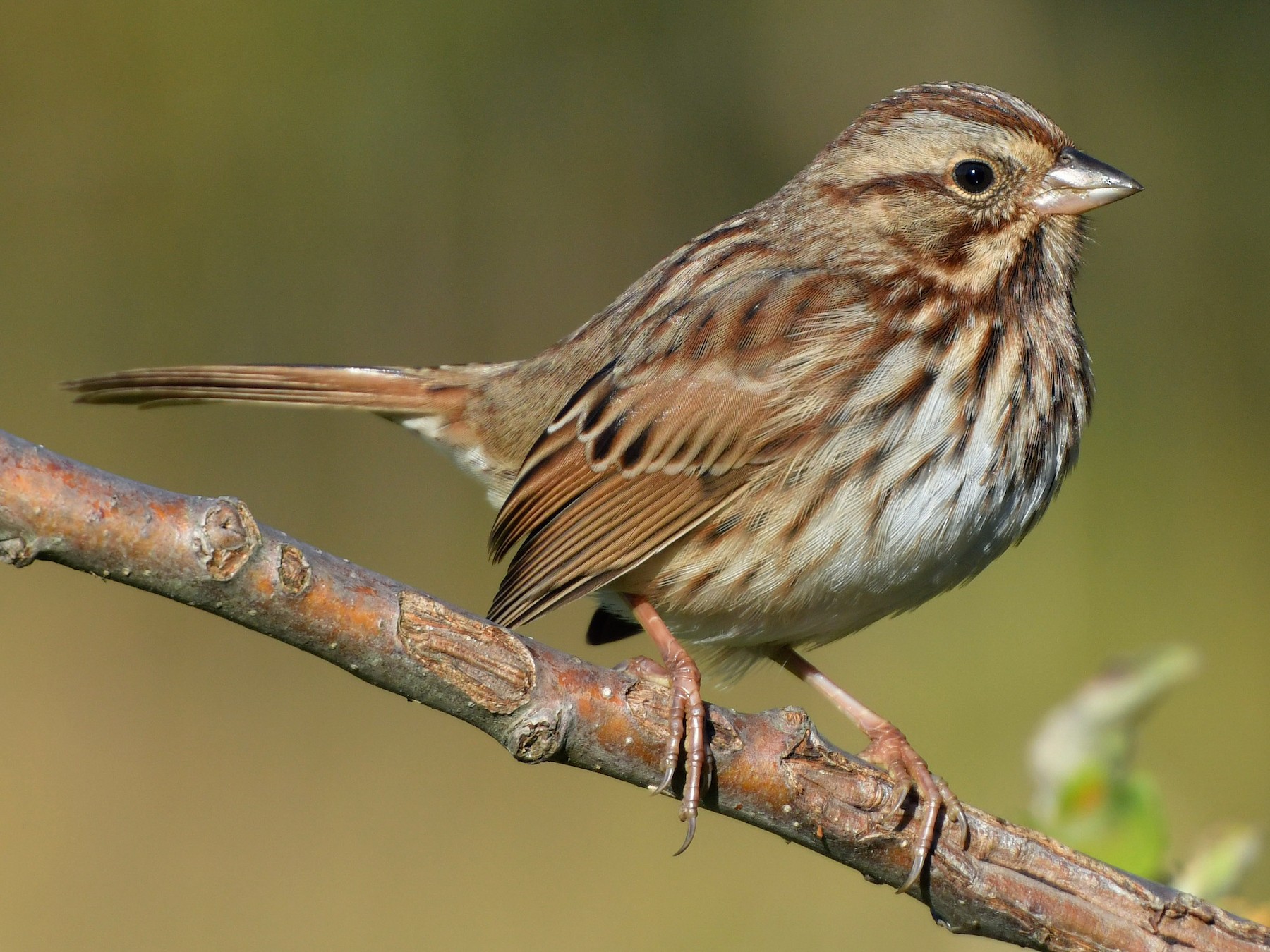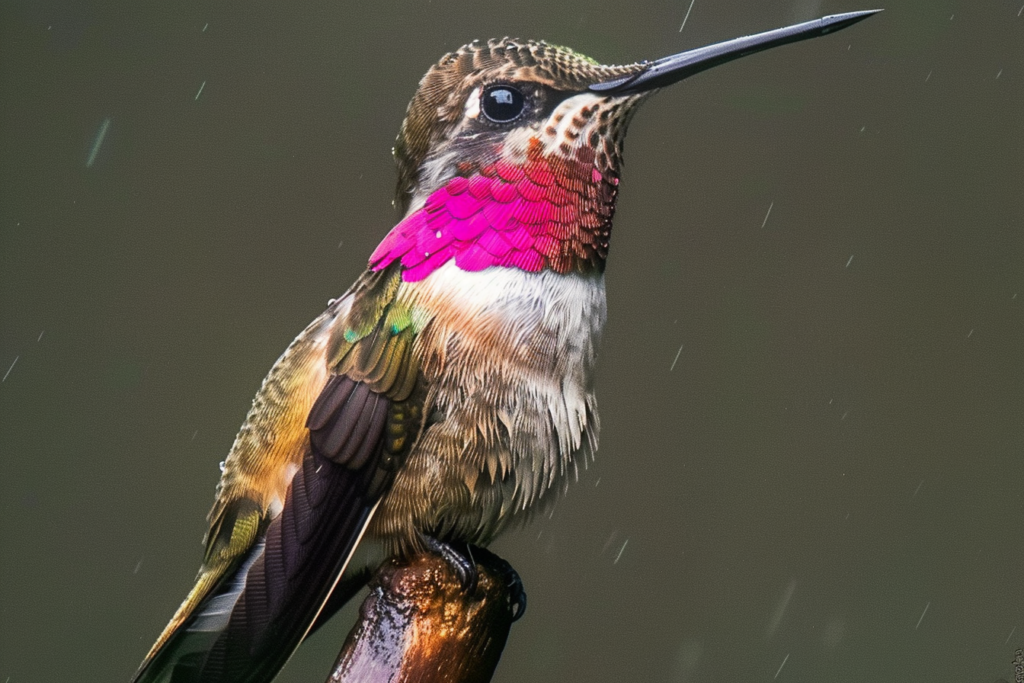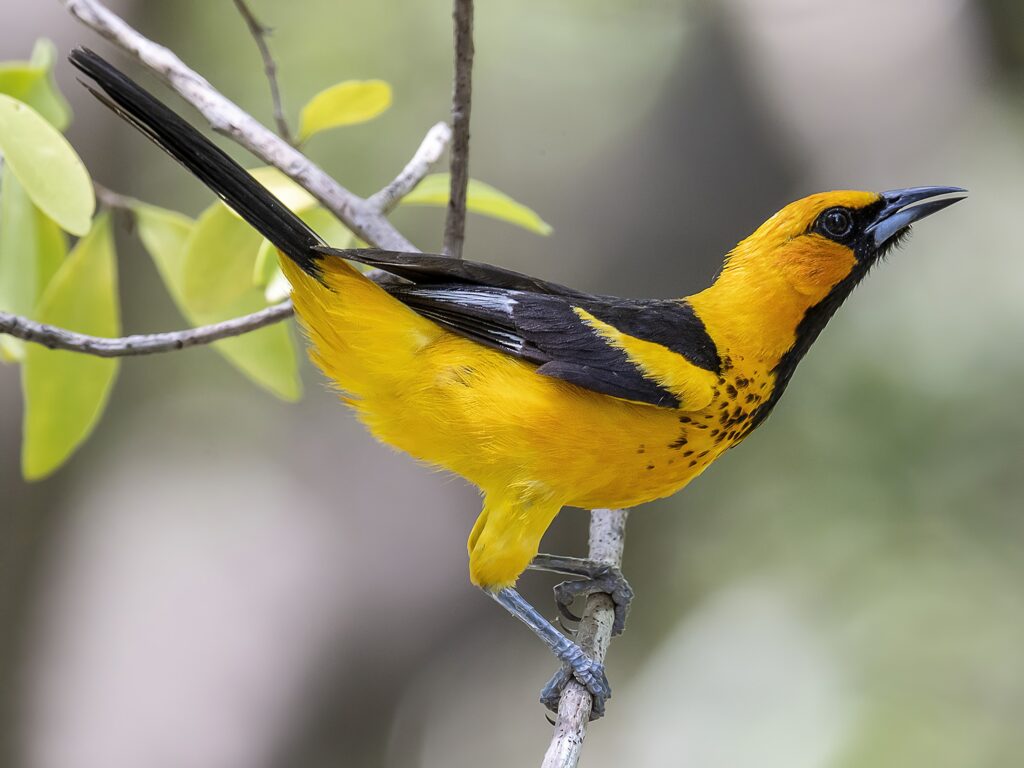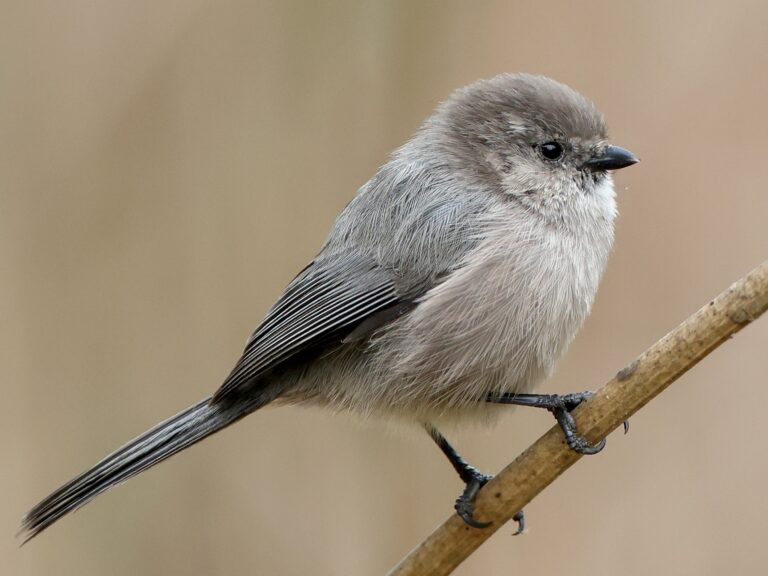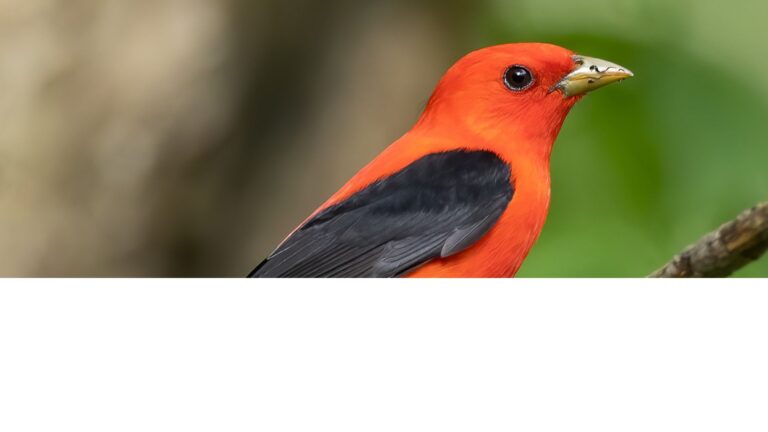Song Sparrow Identification and Fascinating Behaviors Explained
The Song Sparrow, Melospiza melodia, is a medium-sized sparrow native to North America.
You can pick it out by its size, color patterns, and that distinct tail shape. Learning to spot these traits really helps separate it from the crowd of other sparrows out there.
Plumage and Coloration
Song Sparrows wear mostly brown feathers, streaked with darker brown down their backs and sides. Underneath, they’re pale—white or grayish—with bold brown streaks on the chest that usually meet in a central spot.
Their face gives away a lot, too. Look for a grayish background with a brown line running through the eye. That pale eyebrow, or supercilium, stands out against the rest of the face and is a solid field mark.
Streaks can look heavier or lighter depending on where the bird lives. Western birds tend to be darker and more heavily marked, while eastern ones usually look paler.
Here’s a quick table of their usual plumage features:
| Body Part | Color/Marking |
|---|---|
| Back | Brown with darker streaks |
| Underparts | White/gray with brown lines |
| Face | Gray with brown eye stripe |
| Throat | Usually unstreaked |
Tail Features
The Song Sparrow’s tail is a real giveaway. It’s long, rounded, or sometimes just slightly notched at the tip, and it’s usually brown like the back. When perched or flying, they often pump or bob their tails up and down. That little motion makes them easier to spot if you’re patient.
Compared to, say, a Savannah Sparrow, the Song Sparrow’s tail looks less sharply notched and a bit longer. Sometimes, especially right after molting, the feather edges look paler.
Distinguishing Song Sparrows from Similar Species
Song Sparrows get mixed up with other streaky sparrows, but a few traits help them stand out. That thick brown streaking on the chest, often coming together in a dark central spot, is a classic clue.
The combo of heavy chest streaks, a long rounded tail, and a grayish face with a bold brown eye stripe is pretty unique. Chipping Sparrows, for example, have a clean gray breast and a slimmer build (study here). Field Sparrows don’t have all that chest streaking and show off a small, pink bill.
Spotting these details can mean the difference between a solid ID and a wild guess. For more on how sparrows recognize each other, check out this study on song variation.
Song Sparrow Habitat and Distribution
The Song Sparrow pops up in all sorts of places across North America. It’s a bird that adapts well, thriving in both wild spots and places shaped by people.
You’ll often find them where there’s a mix of cover and open ground.
Preferred Habitat Types
Song Sparrows look for homes with dense cover and enough open ground to forage. They love low shrubs, tangled plants, and even weedy patches. Cover matters—a lot. It keeps them safer from predators and shields them from bad weather.
They’re flexible and settle in wetlands, grasslands, forest edges, and even city parks. As long as there’s thick brush near open areas, they’re happy, hunting for seeds and insects.
The way they pick nest sites really affects their breeding success. Curious about that? Here’s some research on nest site selection.
Range Across North America
Song Sparrows are everywhere. Their range stretches from the Atlantic to the Pacific, from Alaska and northern Canada all the way through the U.S. and into Mexico. You can find them in nearly every U.S. state and most of Canada. Some stick around all year in mild coastal areas, while others head north to breed in spring and summer.
In California and along the West Coast, they’re especially common. Their reach goes as far south as central Mexico, and they can handle both rural and city life. Genetic studies reveal a diverse population history across this huge range.
Specific Habitats: Marshes, Salt Marshes, and Gardens
Song Sparrows thrive in wetlands like marshes and salt marshes. Thick cattails, reeds, and low shrubs are their favorite nesting spots in these wet habitats. Salt marshes along the coasts support dense populations, too.
City and suburban gardens attract them as well. Overgrown flowerbeds, brush piles, and hedges mimic wild cover, drawing them in. They’ll happily use bird feeders and water sources, making gardens a great place to watch their antics up close. Their knack for adjusting to man-made spaces gives them a leg up in a changing world.
Migration Patterns
Migration depends on where they live. Song Sparrows up north, in places like Alaska or northern Canada, are usually migrants. When winter hits, they head south to warmer spots like the southern U.S. and Mexico.
Coastal or milder western populations often stay put all year. These birds are residents and only move locally if they need food or shelter. Timing and distance of migration depend on weather, food, and habitat. Some island or isolated groups barely migrate at all. For example, certain California marsh populations stick to the same patch year after year.
Behavior and Life History
Song Sparrows have a whole set of habits—feeding, nesting, and defending territory—that help them survive. Ornithologists have spent years watching them, and it’s clear these birds are clever about handling life’s challenges.
Feeding Habits and Diet
Song Sparrows mostly eat seeds and insects. In spring and summer, they go after insects—beetles, caterpillars, spiders—because protein is key for raising chicks. When it cools off, they switch to seeds and small fruits. That shift helps them get through times when bugs are scarce.
They forage on the ground and in low bushes, hopping around as they search for food. Sometimes they’ll pluck seeds straight from grasses or weeds, and backyard feeders are a big draw if you put one out. Their flexible diet means they’re ready for whatever the season throws at them.
Want the best for your backyard friends?
Safflower seed is the best for wild birds because it’s rich in protein and healthy fats, providing excellent nutrition and energy. And, as a bonus, it attracts colorful songbirds like cardinals and chickadees.
Table: Common Foods of Song Sparrows
| Food Type | Examples |
|---|---|
| Insects | Beetles, flies, caterpillars |
| Seeds | Grasses, weeds, wildflowers |
| Fruits | Berries, small wild fruits |
Territorial and Social Behavior
Song Sparrows really hold their ground. Males belt out songs to mark and defend territory, especially during breeding season. Singing isn’t just about keeping rivals away—it’s also how they attract mates. Studies show these birds often return to defend the same patch year after year.
They can get aggressive if another sparrow or intruder comes too close to the nest. This defensive streak helps protect their young from predators and would-be nest thieves.
Females join in, too, responding to threats near the nest. Over time, researchers have noticed that things like nesting timing and past stress can shape how sparrows defend their turf. Observing their territorial defense and nesting patterns gives us a window into their survival strategies.
Breeding and Nesting
Song Sparrows have some pretty detailed nesting habits and interesting parental roles. Breeding season brings its own set of challenges—predators, weather, and the occasional bad luck.
Nesting Habits and Locations
Most Song Sparrows build their nests close to the ground, tucked away in thick grass, shrubs, or low trees. The female takes charge, crafting a cup-shaped nest from grass, leaves, and twigs. She lines it with softer stuff like animal hair or feathers for comfort.
They pick nest spots for cover and a bit of safety from predators. You’ll find nests in meadows, tangled fields, gardens, or near water.
Nest site choices can look different from place to place, and where they build really affects how many chicks make it. Spatial variation in nest site selection is a big deal for nest success in song sparrows. Their breeding season stretches from early spring to late summer, giving them a shot at raising more than one brood if things go well.
Eggs and Chicks
A typical clutch is 3–5 eggs, but sometimes you’ll see a little more or less. The eggs are small, usually pale blue or greenish, speckled with brown. The female handles incubation, which lasts about 12–14 days.
Once the chicks hatch, they’re helpless and need constant care. Small broods aren’t unusual, and the amount of food or the weather can really impact how the nestlings grow. Variation in food and the environment can make a big difference in nestling condition.
Chicks stay in the nest for about 9–12 days before they fledge. Both parents pitch in, feeding them insects and sometimes seeds.
Parental Care by Male Song Sparrows
Male Song Sparrows don’t just sing—they help out a lot with nest defense and chick care. While the female does most of the incubating, males bring food to her and the chicks after they hatch.
Table: Parental Care Activities
| Task | Female | Male |
|---|---|---|
| Incubation | Yes | No |
| Nest building | Yes | No |
| Feeding chicks | Yes | Yes |
| Nest defense | Yes | Yes |
As the chicks grow, males step up their involvement, especially when it comes to fending off intruders. Older males (ASY, or After Second Year) usually do better at defending nests and raising young than younger ones (SY or HY).
Experience really counts—older birds tend to breed earlier and have more successful broods, as shown in studies on age and breeding experience.
Predators and Threats During Breeding
Predators are a constant headache for Song Sparrows. Snakes, cats, raccoons, crows, and other birds all pose a risk to eggs and chicks. Choosing a well-hidden nest helps, but nothing’s foolproof.
Sometimes nests fail because of weather, flooding, or people getting too close. If a brood is lost, Song Sparrows often try again—having a long breeding season gives them more chances. But with nests close to the ground, the risk from predators stays high. Strong nest defense is pretty much a must if they want to succeed.
Vocalizations and Songs
Song Sparrows have a reputation for their varied and complex songs. These vocalizations help them communicate, claim territory, and attract mates, and it’s kind of amazing how different they can sound from one region to another.
Characteristics of the Song Sparrow’s Song
The Song Sparrow’s song comes in short phrases and notes. Each male has a set of song types, or “song repertoire,” that he uses throughout the breeding season. These songs mix repeated notes, trills, buzzes, and whistles. Most songs kick off with a few clear notes, then jump into faster, more complex parts that make each song unique.
Some individuals sing louder than others. Sometimes, they’ll use soft songs during close-up interactions, like when they’re arguing over territory. Spectrograms show how the pitch and rhythm change throughout the song. You can spot a Song Sparrow by looking at these sound patterns—they’re pretty distinctive.
Purpose and Function of Singing
A Song Sparrow mostly sings to claim and defend territory. When a male belts out his song in his chosen patch, he’s letting rivals know the space is taken. This usually cuts down on fights. Songs also help attract mates—females pay attention to how a male sings, since it can hint at his health, age, or experience.
During territorial disputes, males sometimes switch to quieter, softer songs to “warn” rivals or show they’re ready for a showdown. Researchers have found that both loud and soft songs send clear signals to other birds nearby.
Regional Song Variations
Song Sparrows don’t all sound the same. Birds in different regions sing with their own local “dialects.” Young males copy the songs they hear most often as they grow up—a process called song learning. So, birds in one area might use note patterns or rhythms that you’d rarely hear in another population.
Variation in song sparrow songs has been recorded in Maine and other places. These local twists help Song Sparrows tell neighbors from strangers. If a sparrow hears an unfamiliar song, it might react more aggressively. Songs play a big part in both communication and territory defense.
Frequently Asked Questions
You can spot Song Sparrows by their streaky plumage, varied songs, and ability to live just about anywhere. They show up across much of North America and sometimes pop by backyard feeders.
How can you distinguish between a Song Sparrow and a Savannah Sparrow?
Song Sparrows have bold streaks on their chest that come together in a dark spot in the middle. Savannah Sparrows show finer, crisper streaks and a pale yellow spot between the eye and bill.
Savannah Sparrows also have a shorter, notched tail and a slimmer body. There’s more about their songs and looks in the cultural evolution of sparrow songs.
What unique characteristics does a Song Sparrow have?
Song Sparrows stand out for their rich, varied songs and how well they adapt to different environments. Each bird might have several song types, and males use these to claim territory and attract mates.
Their brown plumage has thick, dark streaks and a central breast spot. It’s not flashy, but it’s distinctive once you know what to look for.
What are the differences in appearance between male and female Song Sparrows?
Males and females look a lot alike, both sporting streaky brown and gray feathers. Males run a bit larger on average, but honestly, it’s tough to tell them apart in the field.
Both sexes share the same patterns and colors. If you’re hoping for an obvious difference, you might be disappointed.
Can you describe the typical sounds made by a Song Sparrow?
Song Sparrows sing a mix of clear notes and buzzy trills. Their songs usually start with repeated notes, then tumble into a jumble of varied sounds. The song types stay so consistent that experts use them for studies on song perception and classification. They also use sharp “chip” calls when they feel threatened.
Which regions do Song Sparrows migrate to and from?
Some Song Sparrows migrate, but others stick around all year—it depends on where they live. Birds nesting in Canada and the northern U.S. head south for winter, usually to the southern U.S. or northern Mexico.
Populations along the Pacific Coast and in the southern U.S. tend to stay put year-round. It’s a bit of a mixed bag, honestly.
Are Song Sparrows known to visit backyard feeders?
Song Sparrows do visit backyard bird feeders, especially when seeds are scattered on the ground or served in low trays. They seem to go for sunflower seeds, millet, and cracked corn.
If you’ve got dense bushes or shrubs nearby, you’ll probably see more of them. These birds like to stay close to the ground and dart into cover when they feel uneasy.
